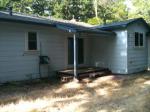There are over 100 million homes and approximately 20 billion square feet of clear glass residential windows in the U.S. Most of these homes are more than 30 years old, and as a result, the market is growing for replacement windows with energy efficient insulating glass units (IGUs). High performance options are now readily available in all regions of the country. These products have improved quite bit in the last few years. We now have products that a have u factors and solar heat gain coefficients less than .3. In fact, the cost to up grade to double pane to low e windows with argon gas from standard double pane windows is less than a $1 per square foot. Heating and cooling energy savings of 10 to 20 percent or more can be achieved depending on climate region and the replacement window choice. Similar savings are achievable in new construction by upgrading to high-performance glazing. Almost all of these new products reduce ultraviolet (UV) radiation compared with clear glass, and fading damage due to UV can be cut by 50 percent or more.
A Profusion of Choices
Since there are hundreds of window manufacturers, each with many different product offerings, it’s easy to get confused trying to sort through the trade names and marketing hype. Window options used to be limited to single-pane versus double-pane and wood frame versus aluminum frame. Today, there are three or four basic frame types, double- and triple-pane glass, and warm-edge insulating glass spacers. The low-E coatings used on most windows today can be formulated for low, medium, or high solar gain. The terminology alone is enough to make your head spin, and most of this technology is hidden inside the window so it can’t readily be seen.
For example, all low-E coatings improve the insulating value of the glass and are clear to the human eye. Beyond the visible spectrum, low-E can be formulated to either allow solar heat gain into the building (great for passive solar in cold climates) or to significantly block solar gains (important for air-conditioning in all climates).
To make matters even more challenging, consumers have grown to expect high performance from their windows, even when they don’t understand the technologies involved. I once received a call from a homeowner who had bought tinted windows. A few sunny days after the installation, she wanted the windows removed because she didn’t feel they were doing anything to reduce heat gain, as the salesperson had so zealously promised. After a few questions, I discovered that she had a 10-foot-wide covered porch wrapping all the way around her house. She was right: Her windows never received direct sunlight, so there was no way a tinted window was going to affect her energy costs. She had been sold the wrong product.







